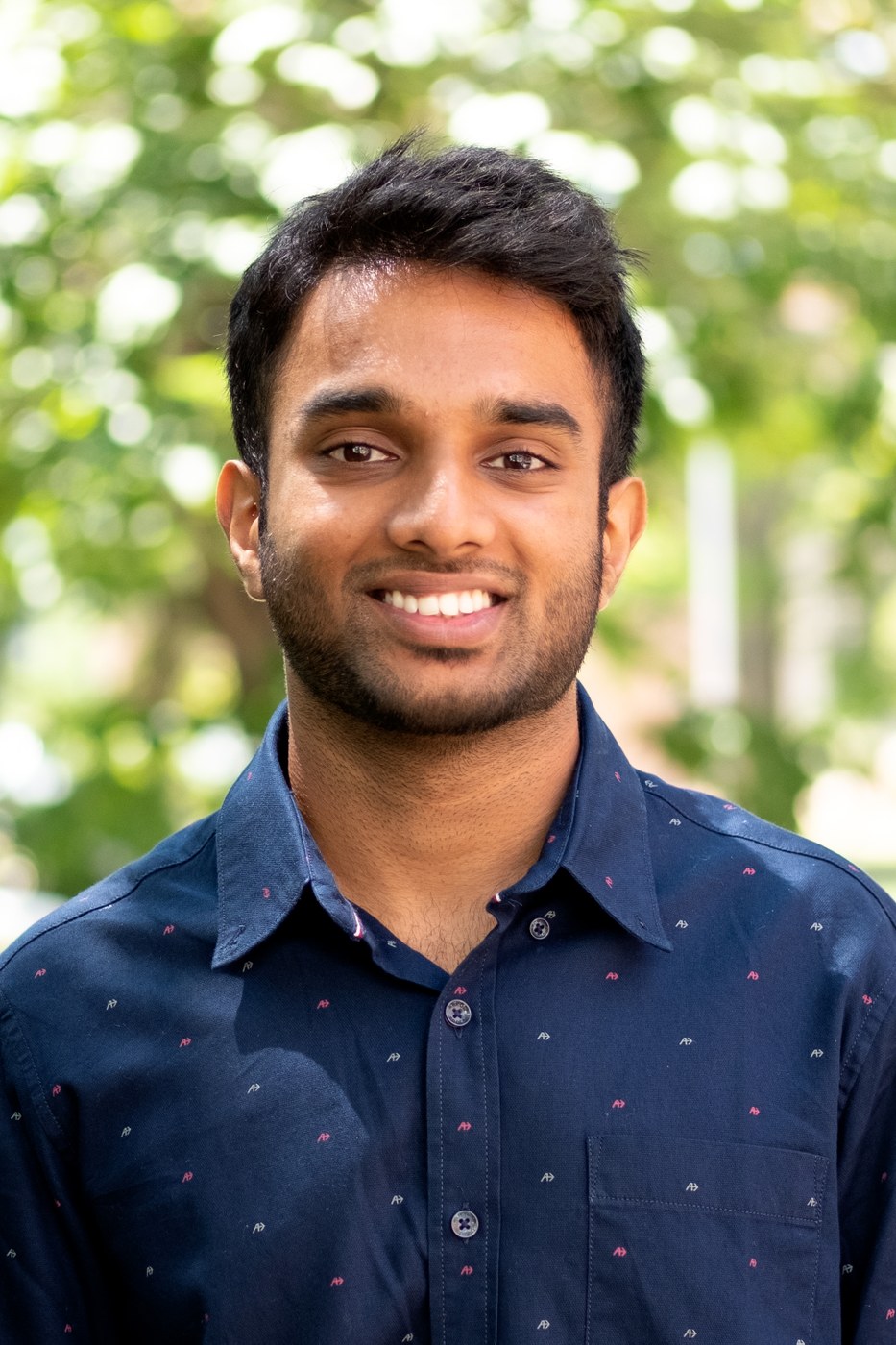This is the sixth of ten short news articles written by students, during the professional development class of Fall 2022, about each other's research.

Sahil Pawar
Student Research Spotlight - Sahil Pawar
By Sarah Spence
A scream echoes through your garden. It warns others of an incoming attack. It calls for reinforcements. Then, it’s cut short. Did you hear it?
Sahil Pawar can. Or at least, he detects the airborne chemical signals released by tomato plants when corn earworm caterpillars feed on their leaves. Sahil, a Ph.D. student in Dr. Gary Felton’s lab at Pennsylvania State University, investigates how caterpillar saliva can silence tomato plant signals.
“Insects feeding on the plant leaves basically acts as a stress for the tomato plant,” said Sahil. “The tomato plants call insect predators to eat the caterpillars and tell the neighboring tomato plants to arm themselves against the incoming caterpillars.”
Tomato plants release these airborne chemical signals though small openings in their leaves called stomata. However, chemicals in caterpillar saliva can trigger changes in the plant physiology that close these stomata. Sahil believes that caterpillar saliva evolved to trigger closing of these leaf openings to prevent the tomato plants from communicating.
“The caterpillar has mounted a counter-defense against tomato plant signals,” said Sahil. “If caterpillar saliva can stop signals, there will be fewer insect predators and poorer neighboring plant defenses. This is beneficial for the caterpillar feeding on plants.”
Through greenhouse experiments, Sahil hopes to prove that caterpillars prevent the release of airborne chemical signals and stifle warning calls between plants.
Next time you stand in your garden, straining your ears to the warning sound of your tomato plant’s calls, you don’t need to worry. Sahil fights on the front lines of the battle against these pests.
An NSF grant for herbivore perception awarded to Dr. Gary Felton is supporting this work. Dr. Jared Ali and Dr. Charlie Anderson are collaborators to this project. The research is conducted under the guidance of Michelle Peiffer, and represents a continuation of the students of recent graduate Dr. Po An Lin.

